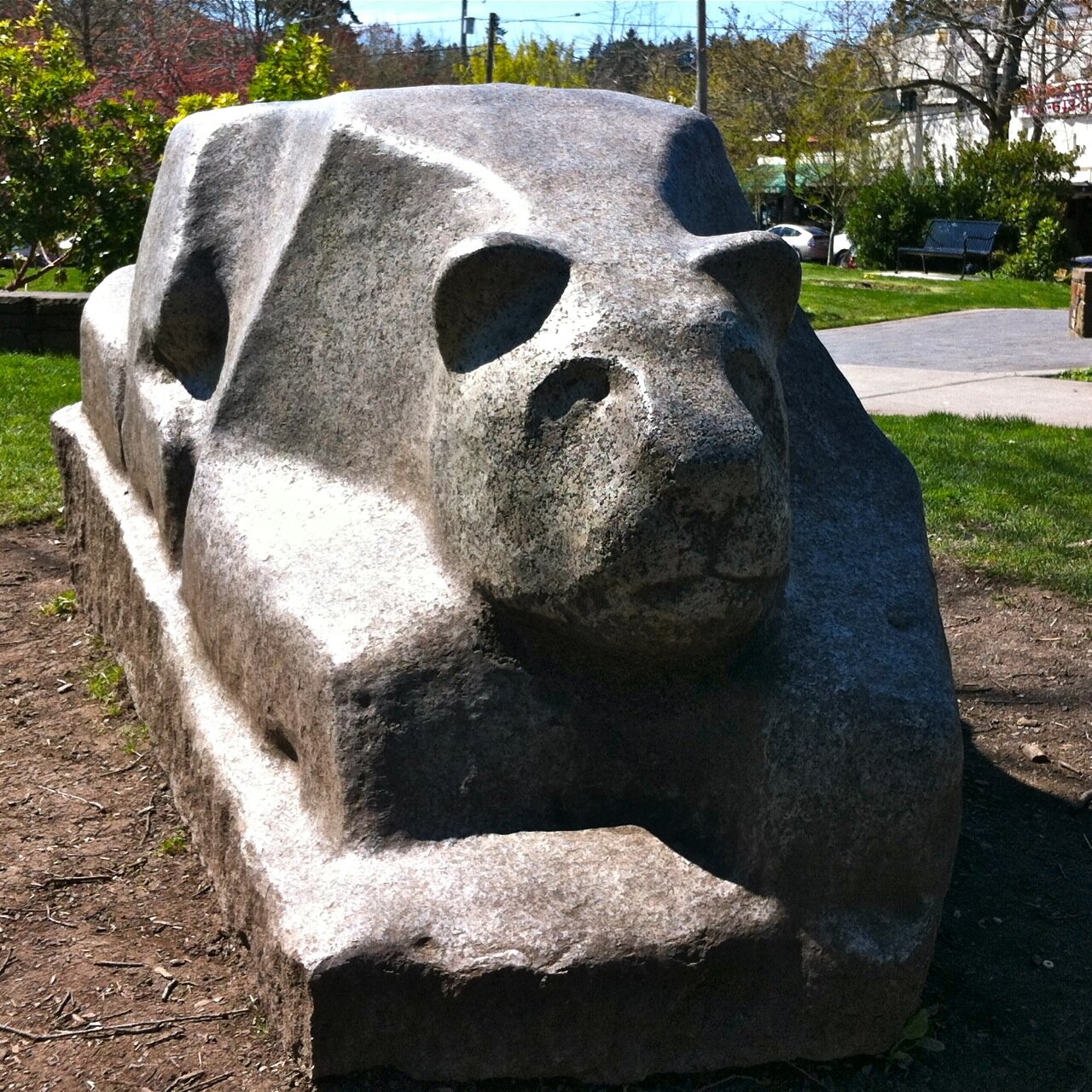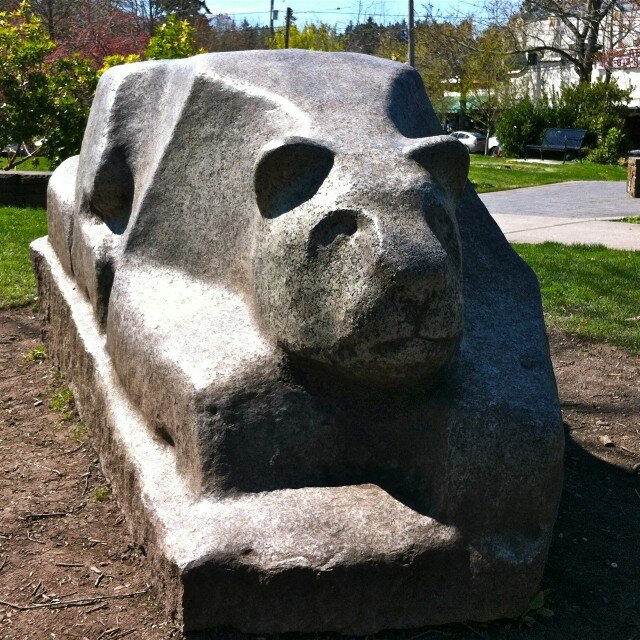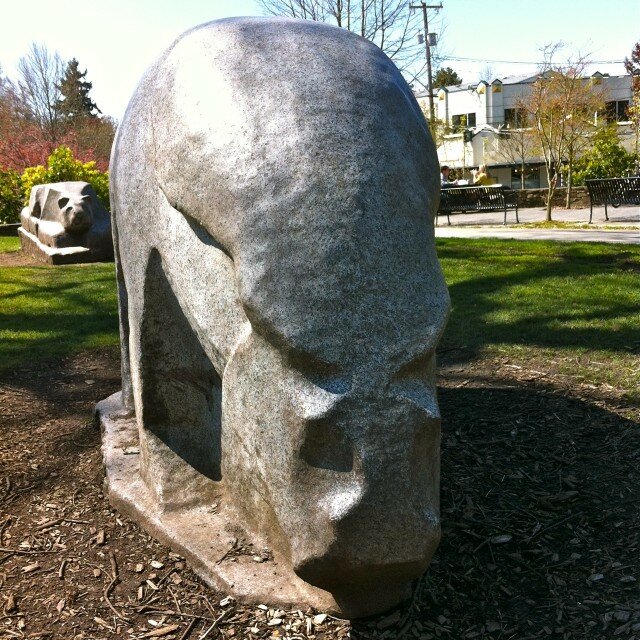When sculptor Richard Beyer passed away last week in New York at age 86, the epithet “creator of ‘Waiting for the Interurban’” was bestowed on him. But that title, while accurate, doesn’t tell the half of it.
For the better part of two decades, Beyer was Seattle’s sculptor of record. His works, always witty, never boring, can be found all over the city. A statue of Ivar Haglund feeding seagulls on the waterfront, wild bears roaming Madison Park (see above), and a family watching TV in front of KING TV on Dexter, are just a few of his most recognizable works.
For some reason, Richard was never a darling of art critics. But he didn’t seem to mind. He still delighted in sculpting a bull sitting on bench reading a newspaper in Ellensburg.
I was lucky enough to meet Richard in the early 1970s. My father was director of Woodland Park Zoo at the time and Richard was creating wonderful art all over the grounds. He sculpted benches, several wall friezes, and a crazy alligator sculpture for the reptile house. His works for the zoo delighted visitors at the time, and several of his works are still there, still making people laugh and smile.
Seattle is a young city with not much of a legacy of public art when compared to New York, Boston, or Los Angeles. The situation is downright pathetic when it comes to statues.
Before Beyer’s work emerged in the late 1960s, the only notable sculptures were of George Washington on the University of Washington campus, a doughboy by Alonzo Lewis, and, in Volunteer Park, and William Henry Seward, the former Secretary of State under Lincoln, who brokered the purchase of Alaska. (Seattle was so grateful that this guy actually visited our backwater town, the city responded with a statue, a park, and a street all named after him.)
Beyer’s work spawned an era of progressive public sculpture in the city. Indeed, next to “Waiting for the Interurban,” arguably the most beloved work of public art in the city, the other most popular sculptures are “Black Sun” by Noguchi and the Fremont Troll–both products of the same time period and unconventional vibe of Beyer.
Nothing we’ve come up with since has drawn the love and devotion of those three, oddball, works. (Though I’m partial to Michael Heizer’s ”Adjacent, Against, Upon,” a 1976 wonder that, I’m certain, will be proclaimed the work of druids when dug up 25,000 years from now.)
If you get the chance, head over to Madison Park, or Dexter Avenue, or the waterfront, or Woodland Park Zoo, and remember Richard Beyer, our sculptor laureate, the best way possible: by enjoying his wit, his good humor, and his patient work.







